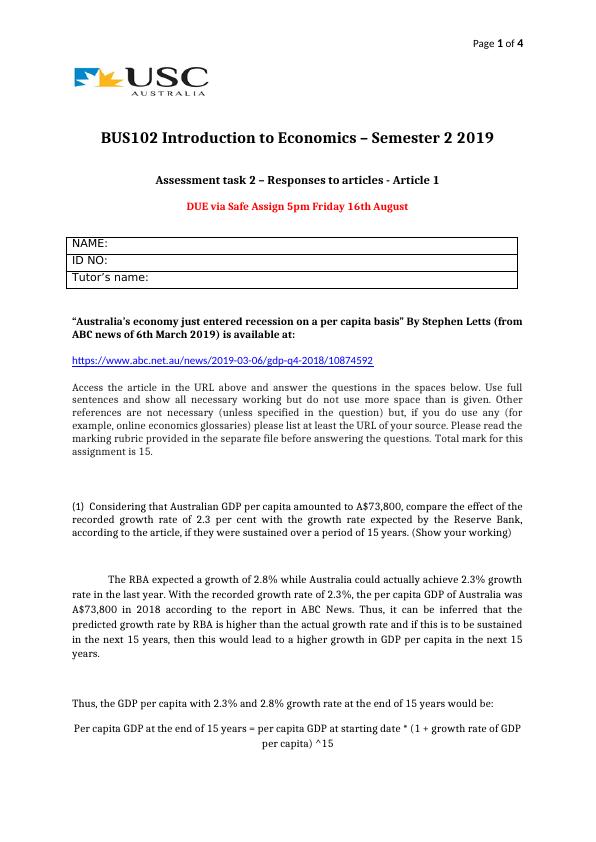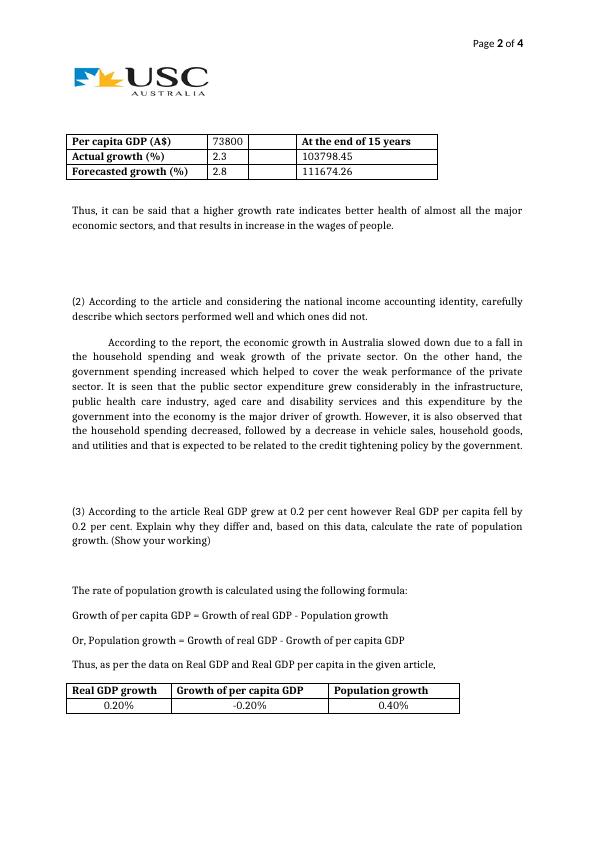Responses to articles - Article 1
Marking rubric for BUS102 course on Responses to Articles (TASK 2 - Article 1) in Introduction to Economics. The assignment requires identification of relevant data, application of the compound growth formula, analysis of an economic scenario, and support with relevant theory and evidence.
4 Pages861 Words91 Views
Added on 2023-03-31
About This Document
This document provides responses to articles related to Australian GDP per capita growth rate, sectors that performed well and those that did not, the difference between Real GDP and Real GDP per capita, the rate of population growth, and limitations of GDP as a measure of economic welfare.
Responses to articles - Article 1
Marking rubric for BUS102 course on Responses to Articles (TASK 2 - Article 1) in Introduction to Economics. The assignment requires identification of relevant data, application of the compound growth formula, analysis of an economic scenario, and support with relevant theory and evidence.
Added on 2023-03-31
ShareRelated Documents
End of preview
Want to access all the pages? Upload your documents or become a member.
BUS102 Introduction to Economics – Semester 1 2019
|4
|1080
|205
Australia's Economy Enters Recession on Per Capita Basis
|3
|1101
|23
Responses to articles - Article 1
|7
|2287
|92
Economics Assignment: Australia's Recession and Unemployment
|10
|1539
|39
Quantitative Methods for Economic Analysis
|8
|1325
|145
Economics Responses
|5
|628
|192


